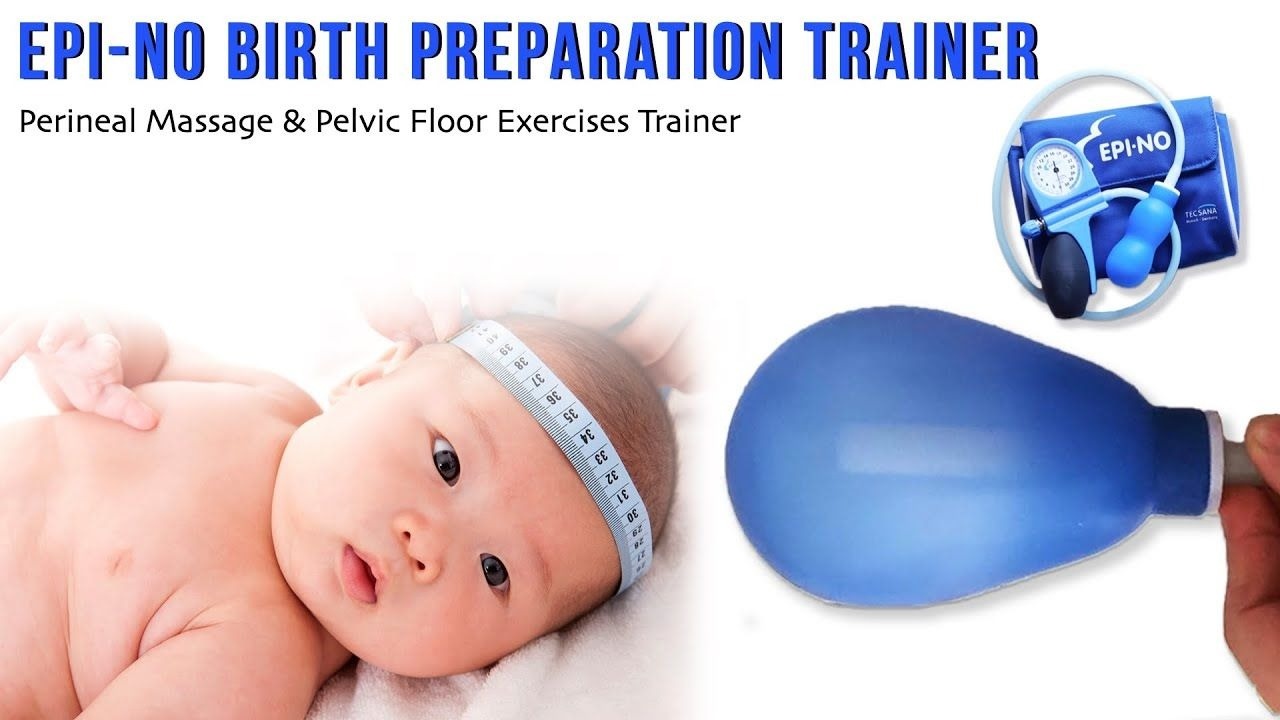
Part One of Two - The EPI-NO Childbirth Trainer
Oct 04, 2021During childbirth, your pelvic floor muscles will be extensively stretched, and it is common to experience tearing. With proper preparation, the likelihood of tearing can be reduced, which can also play a role in preserving the optimal function of this very important group of muscles. Weakened pelvic floor muscles and perineal tearing can lead to problems such as incontinence, decreased sexual sensation and even pelvic organ prolapse. Perineal massage is one method of preparing the pelvic floor for birth, but many find it cumbersome to do with the ever-growing belly. The EPI-No is a fantastic device that helps pregnant women connect with their pelvic floor so they can learn to contract the muscles and relax the muscles, and it can also be used for perineal massage.
What is the EPI-NO?
For centuries, women have given birth, and different cultures have used creative methods to help lessen discomfort, optimize labour, and improve postpartum outcomes. In Africa, for instance, women use gourds of increasing size to help prepare the perineum for birth in order to reduce the likelihood of tearing. This seemingly archaic practice was actually the inspiration for a modern-day device called the EPI-NO that helps prepare the mind and body for childbirth.
The EPI-NO (short for No Episiotomy) was designed by a German physician who was inspired to make this African practice more mainstream. He worked with a team of physiotherapists, midwives, and doctors to develop the product, which has been sold worldwide since 1992.
The EPI-NO is a biofeedback tool that allows you to connect with your pelvic floor muscles. Used during pregnancy, you learn how to contract your pelvic floor muscles and more importantly, how to relax them. In the final weeks of pregnancy, you also use it to perform perineal massage.
The EPI-NO is like a pelvic floor personal trainer that builds strong, flexible muscles that are able to support the weight of the growing baby, that are able to relax to allow the passage of the baby’s head during birth and that are able to recover more optimally postpartum. The EPI-NO also allows you to learn how to yield against the discomfort you may feel as the baby’s head crowns during birth.
What is the Pelvic Floor?
The pelvic floor is a small group of muscles and connective tissue that run from the pubic bone to the tailbone that function to support the internal organs, ensure healthy urination and bowel movements and contribute to satisfying sex. Like any other muscle group, the pelvic floor muscles can become weak, get injured or become dysfunctional, leading to pain and discomfort. Tearing of the muscles in the perineum and pelvic floor is common during the second stage of labour.
The second stage of labour (the pushing) is often the most dreaded, with tearing and episiotomy being common fears. As the head emerges, the area between the vagina and the anus, called the perineum, can tear or be surgically cut (episiotomy). By strengthening and stretching the muscles and tissues of the pelvic floor prior to birth, you can minimize this perineal trauma.
Tearing ranges in degrees from first to fourth degree. First-degree tears are small and superficial and typically heal naturally. Second-degree tears are deeper and affect the skin and muscles of the pelvic floor and need to be repaired with stitches. Third- and fourth-degree tears (also called OASI – obstetric anal sphincter injuries) involve the skin and muscles extending down to the anal sphincter, with fourth-degree tears extending even further into the anal canal and rectum.
While tearing is certainly not ideal, it is better than an episiotomy. Women who have an episiotomy often lose more blood during delivery, report longer, more painful healing times and are more likely to have weak pelvic floor muscles after birth. They are also more prone to infection and decreased sexual satisfaction and are at a greater risk of suffering third- and fourth-degree tears during birth when the incision itself tears. By preparing the pelvic floor for pushing with the EPI-NO, women will have strong, flexible and healthy muscles, thereby reducing the likelihood of tearing or requiring an episiotomy. The EPI-NO is a fantastic tool to help train the pelvic floor muscles to respond appropriately during birth.
In Part TWO - EPI-NO Childbirth Trainer, we discuss
- How to use the EPI-NO,
- When to use the EPI-NO and
- Where to Buy
- As well as a few instructional videos.
You deserve body confidence, and it all starts with the pelvic floor!
The 28-Day Challenge and Buff Muff Membership
I recommend checking out my comprehensive pelvic health education and fitness programs on my Buff Muff App. The most complete Pelvic Floor & Kegel exercise App to strengthen the pelvic floor.
The Buff Muff 28-Day Challenge (housed in the App) gets you started, and the Annual membership keeps you progressing so you can laugh, run, jump, and lift without the pesky leaks and annoying discomfort of prolapse symptoms.




